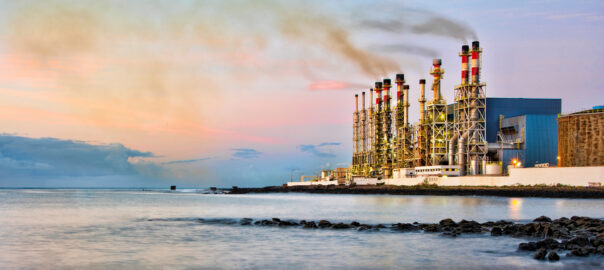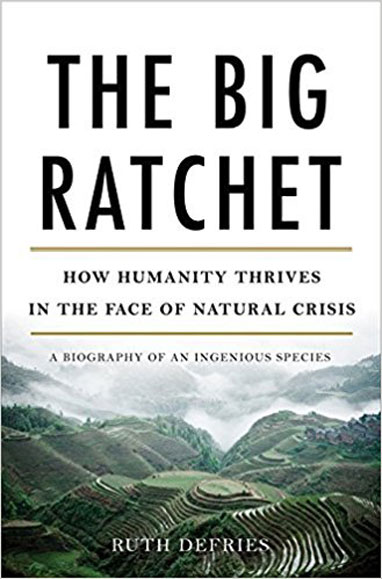
Spain’s Desalination Drive
Desalination plant near Arrecife, Lanzarote, built in 1964. (Gordon/stock.adobe.com)
Spain is one of the most water-scarce countries in Europe, with droughts and extreme temperatures set to intensify this shortage. To secure reliable freshwater sources, Spain has had to develop a strategy and infrastructure that balances sustainable supply with the needs of tourism and agriculture.
Global freshwater reserves are facing increasing strain, and as a result more countries are turning to desalination to secure long-term water supplies. The large-scale investment and development in the Middle East and North America have dominated discussion of this growing field, yet Spain quietly ranks among the global leaders in desalination capacity, having adopted the technology not out of luxury, but necessity.
Spain has been experimenting with desalination since the 1960s, when they constructed Europe’s first plant on Lanzarote—a Canary Island with no conventional energy sources and very limited groundwater reserves. The first facility could produce just 2,300 cubic meters of potable water per day. Now, due to increased population and tourism, six of Spain’s seven main islands have desalination plants. They generate 600,000 cubic meters of water each day (55% of the archipelago’s water reserve), at an annual cost of over 200 million euros and 12% of total electricity demand. Spain has since cemented itself as the leader of this technology in Europe, operating 58% of the EU’s desalination plants.
On the mainland, the tourist hotspots of Barcelona, Valencia, and Alicante are taking the biggest hit from lack of water reserves. Despite catastrophic flooding in the fall of 2024, the region is still battling droughts—the period of 2021–2023 marked the some of the driest conditions in Spanish history. Agriculture accounts for 80% of Spain’s water consumption, but Catalonia’s water crisis was so severe in February 2024 that conservation measures included cutting water use by 50% for livestock and 80% for irrigation for four months. These unprecedented cuts extended to domestic use, limiting personal consumption and banning the filling of swimming pools. This pool ban was not imposed on hotels in touristic areas, exempting foreign visitors from restrictions and, as a result, fueling the growing anti-tourism sentiment in the country.
Here’s how this water-scarce region is tackling the problem:
- Barcelona
- Following a drought emergency in 2008, the city of Barcelona began construction of the Llobregat Desalination Plant, Europe’s largest facility. In normal conditions it accounts for about 3% of Barcelona’s water, but in drought events up to a third of the city’s water supply can come from this singular plant.
- Their newest venture is to construct a temporary floating desalination plant in the city’s port, to be deployed if Catalonia’s Ter-Llobregat catchment system enters “Emergency Phase II” —a drought protocol triggered when water reserves fall below 11% for the catchment area. The mobile structure would be able provide 6% of Barcelona’s water supply, removing the need to ship water in during dry periods as was seen during the 2006–2008 drought. It would also offer far more efficient process, allowing for 40,000 cubic meters of water to be produced daily, compared to the maximum 25,000 cubic meters that can be delivered by ship. The expectation is that this new facility, in conjunction with the provision from the Llobregat plant, should be able to sustain Barcelona in periods of reduced rainfall.
- Valencia
- The Sagunto Desalination Plant contributes significant proportions of water to Valencia and the surrounding areas. The combined power and water treatment plant cost tens of millions of euros and is capable of producing 23,000 cubic meters of water per day.
- Alicante
- Alicante is fed by the largest reverse-osmosis desalination facility in Europe—the Torrevieja desalination plant. Since 2008 this site has been supplying up to 240,000 cubic meters of water each day to the city of Alicante and nearby settlements, accounting for the water needs of 1.6 million residents. A four-year project was started last year at a cost of almost 90 million euros to increase its output by 50%, from 80 million cubic meters a year to 120 million.

Public Perception
With drought one of the main concerns for Catalan voters ahead of the 2024 local elections, there has been a positive response to the newly elected regional president of Catalonia, Salvador Illa, approving another €200 million desalination project on the Costa Brava. Both regional and national governments have been seen to respond to the needs of their inhabitants and are investing time and capital into increasing water supply. These initiatives face some opposition, however. Farmers in Valencia have been voicing their concerns over the lack of crop-friendly nutrients in desalinated water and the environmental impacts of brine disposal. However, with reservoir levels dwindling to below 50% capacity, there may be little choice in the matter.
Insights
As one of the most drought-ridden countries in Europe, Spain has been leading the continent’s desalination efforts for the last 60 years. Challenges remain in regard to environmental impact and equitable access to smaller municipalities, but regions such as Catalonia and Valencia are innovating new technologies to sustain both locals and tourists in water-scarce areas. As the demand for water intensifies across the globe, Spain’s experience offers valuable insight for regions considering desalination as a long-term water management solution.

The Future
Six Drivers of Global Change
Al Gore
No period in global history resembles what humanity is about to experience. Explore the key global forces converging to create the complexity of change, our crisis of confidence in facing the options, and how we can take charge of our destiny.

Our Choice
A Plan to Solve the Climate Crisis
Al Gore
We clearly have the tools to solve the climate crisis. The only thing missing is collective will. We must understand the science of climate change and the ways we can better generate and use energy.

The Big Ratchet
How Humanity Thrives in the Face of Natural Crisis
Ruth DeFries
Human history can be viewed as a repeating spiral of ingenuity—ratchet (technological breakthrough), hatchet (resulting natural disaster), and pivot (inventing new solutions). Whether we can pivot effectively from the last Big Ratchet remains to be seen.

